Understanding the Power of the 3rd Shot Drop
The third shot drop is not just another shot in a player's arsenal; it is a critical turning point within a rally. As the serving team, players often find themselves in a disadvantageous position, forced to react to their opponent's returns. The essence of the 3rd shot drop is to level the playing field and regain control of the net. By executing this shot effectively, players soften the pace of the game, compelling their opponents to reposition and strike the ball from a low angle, thereby reducing their offensive capabilities.
What is the 3rd shot drop?
The 3rd shot drop is described as a deliberate soft shot played from the baseline, destined to land within the opponent's kitchen. It is primarily designed to glide just over the net, falling softly onto the court, minimizing the chance of a powerful return. This shot stands as the pivotal moment within a rally, transitioning momentum back to the serving team. Players aim to position themselves effectively to exploit the potential openings created by their strategic placement.
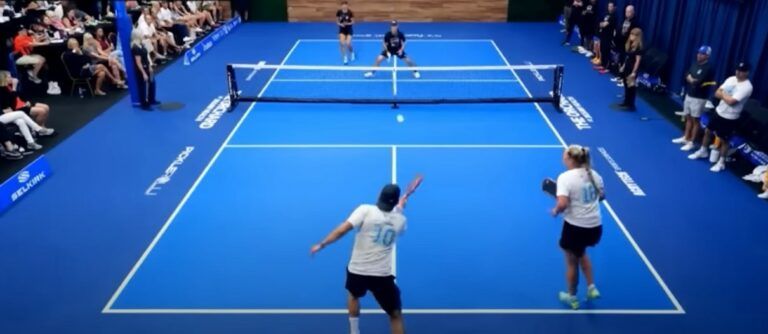
Why is the third shot drop crucial?
Understanding the importance of the 3rd shot drop can significantly impact a player’s strategy and overall game dynamics. One of the main advantages of mastering this technique is that it neutralizes the inherent advantages of the opposing team positioned at the net. A well-placed 3rd shot drop can shift momentum, allowing players to advance toward the net with confidence, ready to execute follow-up shots or volleys, and regain control over the points. In competitive settings, controlling the net means controlling the game and, ultimately, the outcome of rallies.
Building a Solid Foundation: 3rd Shot Drop Mechanics
To effectively execute a 3rd shot drop, players must develop a solid foundation based on proper mechanics and techniques. This building block ensures that the shot is not just performed correctly but also consistently under varying game situations. By dissecting the essential components, players can refine their approach, harnessing greater control and finesse in every drop shot.
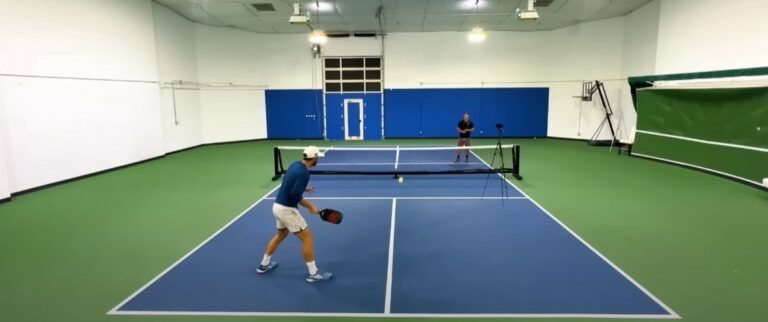
The grip
The grip on the paddle plays a crucial role in mastering the 3rd shot drop. A loose continental grip is recommended, as it allows for better feel and control over the ball. A tighter grip often leads to inconsistencies, inhibiting the player’s ability to execute delicate shots.
The swing
When it comes to the swing, players should focus on initiating a compact, controlled motion from the shoulder rather than relying solely on wrist action. This approach minimizes the risk associated with the traditional backswing, which often leads to unpredictable results. A follow-through that extends toward the target aids in maintaining momentum and consistency throughout the shot.
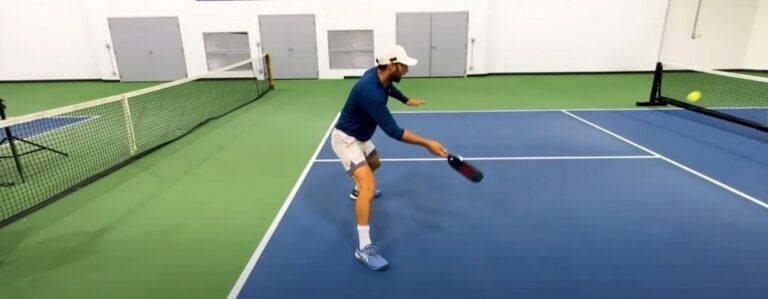
Contact point and weight transfer
A well-timed and precise contact point is vital for an effective 3rd shot drop. Players should aim to strike the ball out in front of their body while on the balls of their feet for balance and readiness. Furthermore, transferring weight forward into the shot adds both power and control, enriching the shot's potential while minimizing the ball's chance to pop up.
Aiming Like a Pro: Targeting Your 3rd Shot Drop
Precision in targeting is instrumental in mastering the 3rd shot drop. With proper strategies in place, players can dictate how the rally unfolds and place their opponents at a disadvantage, leading them toward a less favorable position for return shots.
Visualizing the apex
As players launch into their shot, understanding the ball's trajectory is key. The ball follows a parabolic path, reaching an apex before descending. Focusing on aiming for a point slightly below this apex ensures that the drop remains consistent and accurate. Aiming directly at the kitchen line could lead to common pitfalls, such as hitting the net or providing an attackable return to opponents.
Strategic target zones
In order to exploit weaknesses in the opponent's defense, targeting specific areas within the kitchen becomes paramount. Rather than merely aiming for the kitchen itself, consider forcing an upward bounce by placing the shot near the edges or into corners, thus challenging the opponent's ability to make effective returns.
Adapting trajectory
A strategic player adjusts their shot based on court position and the opponent's readiness, modifying the ball’s height and depth as necessary. For example, when positioned closer to the net, a lower trajectory may be called for, while a player hitting from the baseline might opt for a higher arc.
Overcoming Common Challenges: Troubleshooting Your 3rd Shot Drop
Even experienced players encounter challenges when attempting the 3rd shot drop. Understanding these common pitfalls allows for better preparation and a more refined execution strategy.

Hitting into the net
One of the most frequent mistakes players make is failing to loft the ball adequately. Insufficient loft due to rushing the shot can lead to hitting the net. To counter this, prioritize ensuring the ball clearance over the net, even if this means hitting with more height in the early stages of improvement.
Hitting too high
Conversely, hitting the ball too high and placing it in an attackable zone results from improper aiming and excessive backswing. Maintained focus on the apex can alleviate this issue; controlling the swing and ensuring a compact motion ensures precision while reducing unexpected errors.
Popping the ball up
Players sometimes pop the ball up due to being on their back foot, hitting late, or employing excessive wrist movement. Proper positioning and an even weight transfer throughout the shot are essential to maintain control and ensure a low shot trajectory.
From Good to Great: Practice Drills for Consistency
Effective 3rd shot drop execution requires diligent practice and consistency. Specific drills can help players enhance their skills and refine their approach, paving the way toward mastery of this important technique.
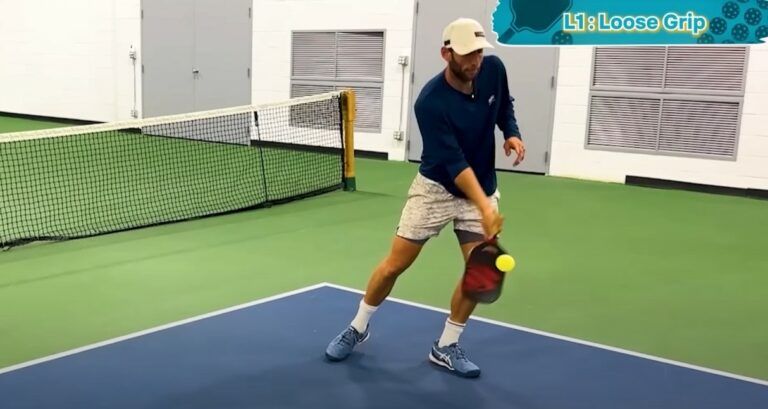
The slinky drill
The slinky drill allows players to practice drop shots by progressively moving back from the non-volley zone. This progression fosters a sense of touch and consistency through repetition, encouraging players to develop their skills while gradually increasing the distance.
The underhand toss drill
In this practice drill, players toss the ball into the kitchen using an underhand motion without a paddle. This exercise helps cultivate an understanding of the desired trajectory and feel needed to execute a refined drop shot.
Partner feedback and observation
Feedback is essential for growth. Engaging with a partner during practice helps players identify inconsistencies and areas for improvement. Observing skilled players in action deepens understanding and appreciation for the nuances associated with a successful 3rd shot drop.
The 3rd Shot Drive: A Powerful Alternative
While the 3rd shot drop is pivotal, it’s not the only technique on the court. The 3rd shot drive serves as a powerful alternative in specific scenarios, providing players with more strategic options to keep the pressure on their opponents.
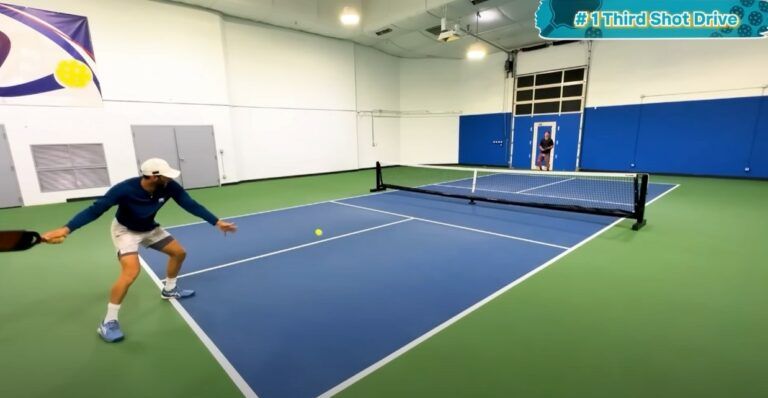
When to drive instead of drop
There are instances where a drive may be preferable rather than a drop. Situations arise, such as receiving a short return or high bounce, or when opponents leave themselves out of position. In such cases, executing a drive can create advantageous opportunities to take control of the rally.
Technique and placement
When employing a 3rd shot drive, players should prioritize a controlled swing complemented by a low trajectory. Targeting gaps in the opponent’s defense ensures effectiveness while maintaining power. The "shake and bake" strategy, which involves one player's partner charging the net after a drive, can capitalize on potential returns, creating a dynamic point of engagement.
Elevating Your Game: Advanced Techniques and Strategy
Taking the 3rd shot drop to new heights involves the exploration of advanced techniques, focusing on nuances that can dramatically influence play.
The topspin drop
Executing a topspin drop utilizes a "windshield wiper" motion, allowing the ball to dip swiftly upon nearing the opponent’s court, applying significant pressure. This technique can catch players off guard, especially when they expect a more traditional drop shot.
Soft game variations
Exploring other soft game shots that can supplement the 3rd shot drop like resets and flicks keeps opponents guessing. These variations enrich a player’s arsenal, enabling them to adapt to opposing strategies.
Reading your opponent
Being aware of one’s opponent is invaluable; recognizing their tendencies, positioning, and style can inform decision-making while executing a 3rd shot drop. This strategic understanding empowers players to exploit weaknesses, maximize offensive opportunities, and dictate the pace of the game.
Adapting to the Environment: Court and Weather Considerations
The conditions in which one plays can dramatically influence the execution of shots, including the 3rd shot drop. Adapting to the environment is essential for success on the court.
Playing on different surfaces
Recognizing that varying court surfaces whether indoor or outdoor affect player movement and ball bounce is critical. Each surface can result in unique shot dynamics, impacting how the 3rd shot drop is executed.
Dealing with wind
Wind conditions can be a significant factor, affecting the ball’s trajectory and requiring players to make adjustments. Being mindful of the wind and its potential impact on shots prepares players to react instinctively and maintain control.
Mental Game: Confidence and Strategic Thinking
Pickleball is as much a mental game as it is a physical one. Cultivating confidence and strategic thinking can greatly enhance performance and execution during matches.
Developing a confident mindset
Confidence shapes a player’s ability to execute shots under pressure. Cultivating a positive mental approach doesn’t only boost one’s performance; it also allows players to face fear and uncertainty with resolve and consistency.
Strategic decision-making
Strategic thinking incorporates risk assessment and adaptability. Being able to shift game plans and make effective decisions based on pressing circumstances provides players with an edge during gameplay, enhancing their performance and control over pivotal shots like the 3rd shot drop.
Continuing Your 3rd Shot Drop Journey
To further hone the 3rd shot drop, players should seek out resources, coaching, and community engagement. By integrating these elements into their training regimen, they can refine their skills and deepen their understanding of this essential technique.
Recommended resources
Utilizing comprehensive resources, including instructional videos, articles, and coaching clinics, amplifies the learning experience. Immersion in these tools fosters growth and skill development, ensuring continued improvement.
Seek professional guidance
Engaging with professional coaches or attending clinics provides players with valuable insights and feedback. Professional guidance allows players to identify weaknesses and adopt new strategies, fostering a more robust understanding and execution of the 3rd shot drop.
In conclusion, mastering the 3rd shot drop isn't merely about practicing a single technique; it's a holistic journey that encompasses both mechanical proficiency and mental acuity. By honing this essential skill, players can wield a powerful tool to reclaim control over the game, enhance their strategic play, and move closer to pickleball excellence. With perseverance, dedication, and a commitment to continuous improvement, every player can elevate their game and achieve success on the court.










